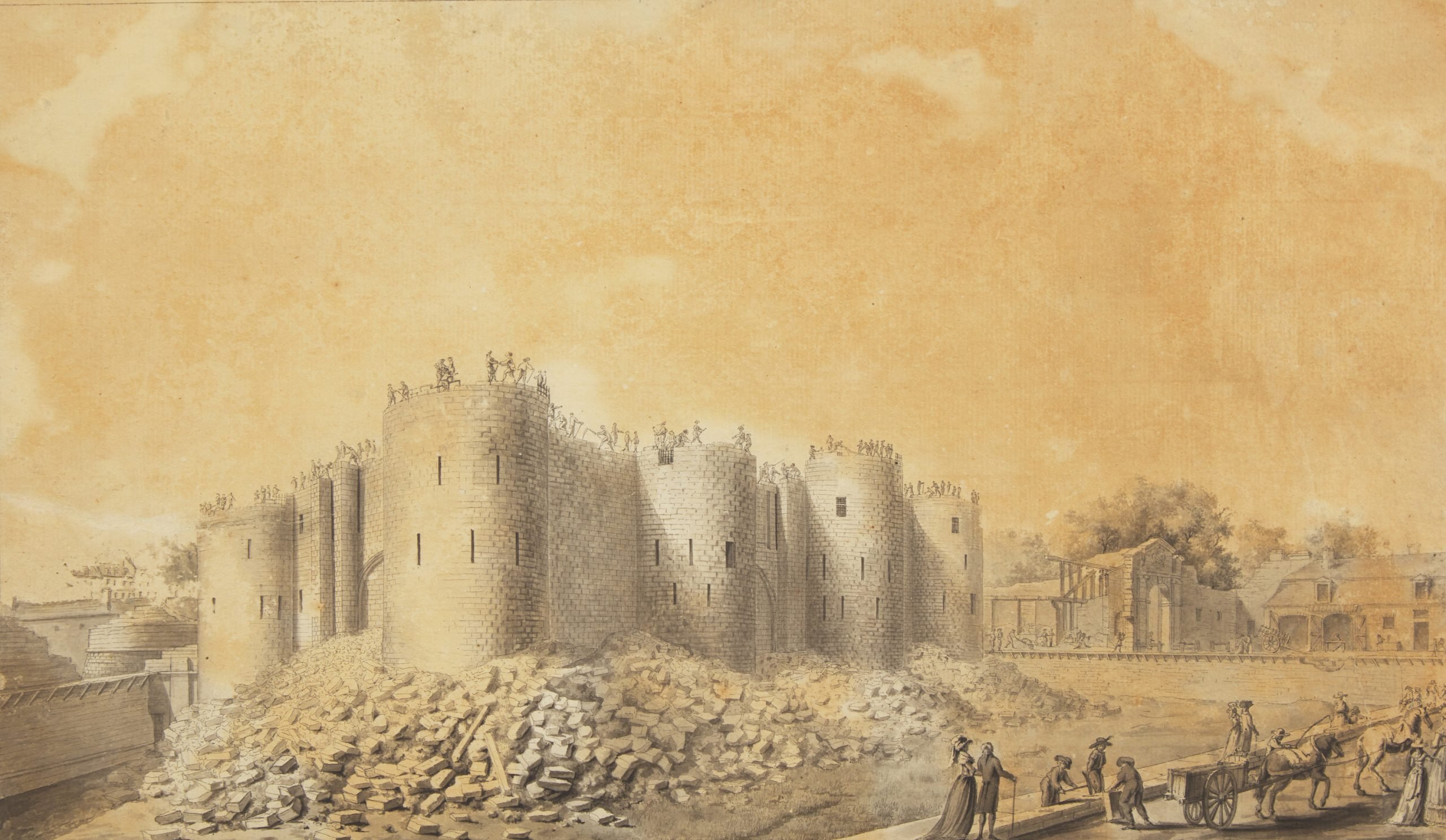
Despite its symbolic heft, the key to the Bastille is fairly unremarkable: seven inches of wrought iron with fleur-de-lis teeth.
George Washington treasured it. Upon receiving the key in 1790, he invited New York’s finest to examine it at a soiree. Newspapers across America promptly printed exact representations, encouraging the masses to ogle a trinket of the French Revolution. It stayed with Washington throughout two presidential terms, before occupying a prominent position in the entryway to his Mount Vernon estate.
Nearby on the wall was an ink-wash drawing of the state prison surrounded by mounds of rubble. Above, figures grace its battlements, vigorously picking away at its masonry. Below, well-heeled Parisians look on, perhaps contemplating, as Washington did, the triumph of liberty over oppression.
The drawing is by Étienne-Louis-Denis Cathala, an architect who oversaw the prison’s demolition. Together with the Bastille key, it was gifted to Washington by the Marquis de Lafayette, who served as a major-general in the Continental Army during the American War of Independence.
Detail of Étienne-Louis-Denis Cathala, The Destruction of the Bastille (1789). Courtesy Freeman’s | Hindman.
“Give me leave, My dear General,” Lafayette wrote in an accompanying letter, “to present you With a picture of the Bastille just as it looked a few days after I Had ordered its demolition, with the Main Kea of that fortress of despotism.”
The Destruction of the Bastille, signed with a note from Lafayette, remained on display in Virginia for a century before being sold. Now, it’s returning to Philadelphia ahead of a September auction hosted by Freeman’s | Hindman, where it’s expected to fetch between $500,000 and $800,000.
Just as it did in the tumult of 1790, the drawing’s tour begins in Paris, its first return since the Revolution, before stateside showings in New York, Chicago, and Philadelphia, where the Museum of the American Revolution will present it to the public at the entrance to the Washington Headquarters Tent throughout the month of August.
Signing detail of Étienne-Louis-Denis Cathala, The Destruction of the Bastille (1789). Courtesy Freeman’s | Hindman.
Washington adored the drawing, finding in it a symbol of a new world that was emerging, one rushing towards justice and liberty. Lafayette, though committed to the cause, was less certain of France’s future, writing to his brother-in-arms that the revolution had set loose wild immorality that dressed itself up as freedom.
Thomas Jefferson, who was in Paris as the first U.S. Secretary of State, was equally conflicted. In dispatches sent to Congress, he wrote of the violence that overtook Paris. He witnessed stones loosed on guards and heads paraded through the streets on pikes. As in Cathala’s drawing, Jefferson stood beneath the Bastille and took in the scene.
Such chaos impacted the delivery of the Bastille relics to Washington. At first, Thomas Paine volunteered to transport them, but when his travel plans were scuppered it fell on Jefferson’s protégé, John Rutledge Jr., to do so.
In 1824, Lafayette crossed the Atlantic one last time at the invitation of President James Monroe. His journey began in New York with a welcoming parade and continued on to Mount Vernon, where he visited the grave of “My Adoptive father” and looked upon the gifts he had sent to Washington 35 years earlier.